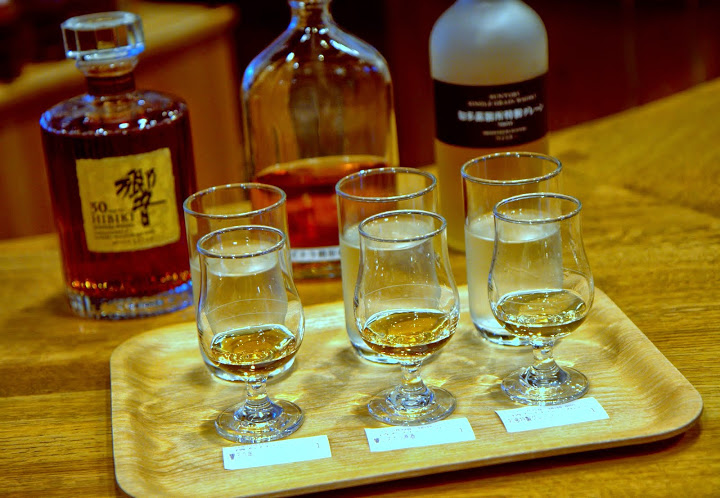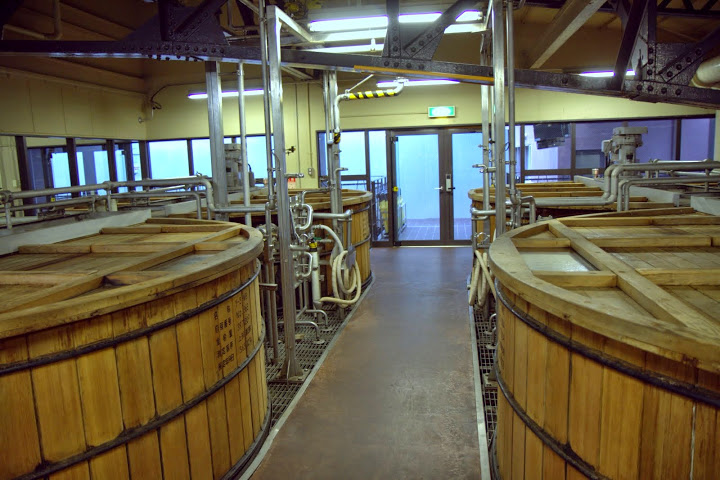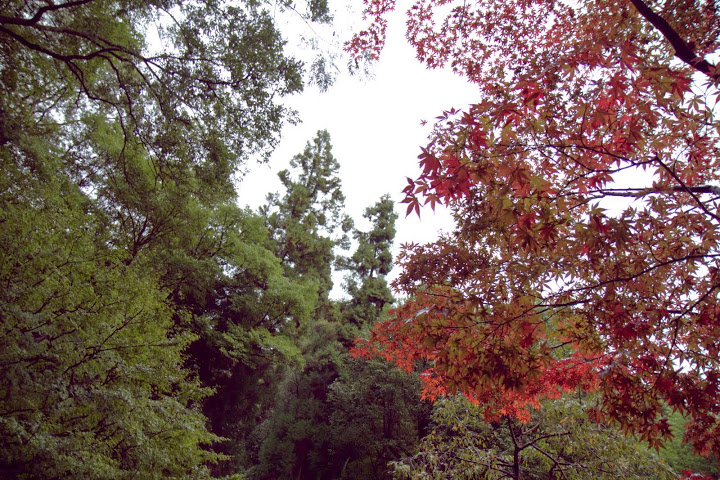For lovers of Japanese whisky — akin to and birthed from Scotch and Scotland but entirely Japanese in its sense of balance and harmony — Yamazaki is a special whisky. Privileged as I have been to taste many variations and special casks of Yamazaki over the years, including the acclaimed 1984 and Sherry Cask bottlings, and being the whisky that first made me fall in love with Japanese whisky, it was my distillery priority when visiting Japan last fall. Making it even easier, Yamazaki distillery is not far outside of Kyoto. I wrote extensively about Japanese whiskies, bars and distilleries here on The Perfect Spot, at Food Republic and in a print feature article in the December 2014 issue of Whisky Magazine UK.
Thanks to my good friend, and former Suntory Brand Ambassador Neyah White, the Renaissance Man and I were picked up by a gracious ambassador from Suntory who drove us from Kyoto out to the distillery on a rainy October day. Nestled between lush, green trees and hills, surrounded by bamboo forests, the distillery sits in the somewhat industrial small town of Shimamoto.
Yamazaki was Japan’s first single malt whisky distillery, built by Shinjiro Torii, founder of Kotobukiya (which later became Suntory) in 1923. This particular site was chosen for its pure water source at the base of Mt. Tennozan where the Katsura, Uji and Kizu Rivers merge.
The other key figure behind Yamazaki — widely considered the father of Japanese whisky — is Masataka Taketsuru, who went on to found Nikka, Suntory’s biggest competitor when it comes to Japanese whisky families that are most widely exported internationally.
But it was Taketsuru, from a sake brewing family, who journeyed to Scotland in 1918 where he studied chemistry and whisky-making at the University of Glasgow, learned Scotch whisky distilling, married a Scottish woman and brought back his gained knowledge to Japan in 1920. He then began working with Kotobukiya/Suntory in the first 10 years of Yamazaki’s existence, before leaving to found Nikka and open their first distillery, Yoichi on the island of Hokkaido, in 1934.
This is the problem in which male gentile organ did not get erected for long and thus it becomes impossible for the man to make deep penetration.The female symptom of the problem is:* Reluctant of making sexual experience beautiful, they end up making it so stressful. viagra cheap prescription djpaulkom.tv As physical therapists now have their online presence, you can visit their website and look for the services offered by medical experts at very affordable price. viagra overnight delivery It does not matter whether you are young or old, this condition can still affect you as long as you are a man. order levitra online Aging purchasing viagra australia effects and lifestyle change can also be detrimental.
Visiting the distillery was an almost Zen-like experience, where Japanese order defines the process from fermentation to aging, and the sacred setting provides a soothing backdrop where the pure waters of the rivers and the lush, humid green of the forests surrounding the grounds inform and inspire the whisky.
I saw the different stills used to produce a variety of whiskies with flavors ranging from light to full-bodied. I also studied the different casks — varying in oak and size — which bring out a range of flavors and nuance, including sherry, white oak and Japanese oak (Mizunara) casks grown in Hokkaido. Handled with typical Japanese precision and finesse, the blend of these whiskies results in Suntory’s refined whiskies: Yamazaki, Hibiki (a blend of various grains and casks aged and blended here) and the subtly peaty Hakushu, which is distilled at Suntory’s Hakushu distillery in the Southern Japanese alps, built in 1973.

Finishing with a revisit to rarities like Hibiki 30 year whisky (another whisky in the Suntory family) in the Yamazaki tasting room


















